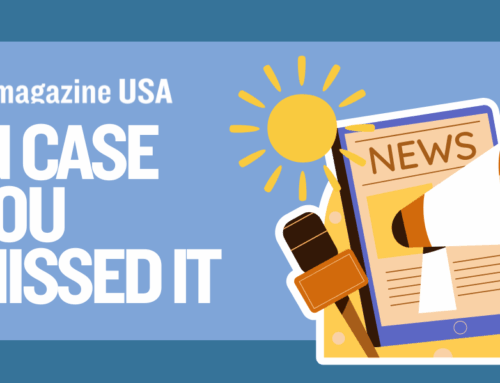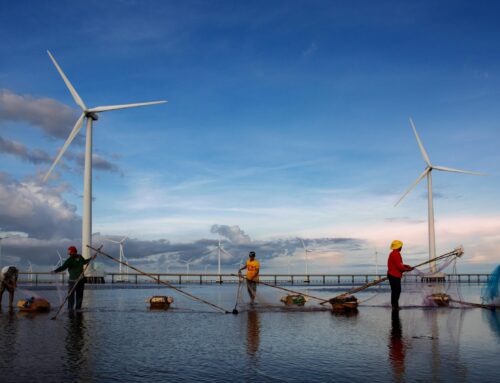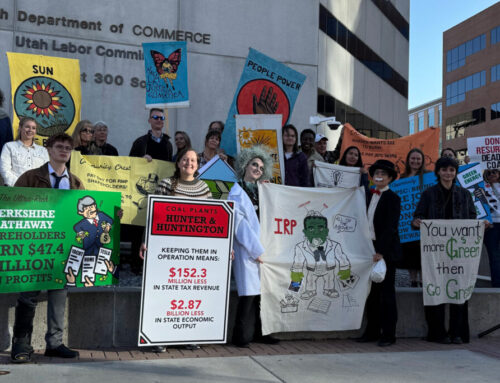The Hidden Cost of Gold: Miners, Mercury and a Path to Sustainability
October 31, 2025

Gold has captivated humanity for millennia, symbolizing wealth, love and power. Yet, behind its shimmer lies a dark environmental legacy. Across more than 70 countries, over 10 to 15 million artisanal and small-scale miners, including an estimated 4 to 5 million women and children, rely on mercury to extract gold from ore, according to the United Nations Environment Programme (UNEP). This method, known as amalgamation, involves mixing mercury with crushed ore to form an alloy that’s later heated, releasing mercury vapor and leaving behind gold. The process is simple and effective, but the consequences are devastating.
The World Health Organization (WHO) classifies mercury as one of the top ten chemicals of major public health concern. Once released into the environment, it transforms into methylmercury, a potent neurotoxin that contaminates rivers and fish, accumulating up the food chain. According to UNEP’s Global Mercury Assessment, artisanal and small-scale gold mining (ASGM) is the largest source of mercury pollution worldwide, contributing roughly 38 percent of total human-caused mercury emissions each year.
Designer Delphine Leymarie, co-founder of Reciprocity Jewels, underscored the scale: “The artisanal and small-scale gold sector releases around 2,200 tonnes of mercury every year—nearly 37 percent of human-generated emissions—yet it produces only about 12 to 15 percent of the world’s primary gold. The ripple effect is enormous.”
In some regions, contamination has reached alarming levels. A 2025 study by Pure Earth in Ghana found that soil samples near artisanal mining communities contained mercury concentrations exceeding global safety thresholds by more than 100 times. In Peru’s Madre de Dios region, the Artisanal Gold Council estimates that 181 tons of mercury are released annually.
“Mercury does not stay where it is used—it travels,” said France Armando Cabanillas Vásquez, local coordinator for Pure Earth in Madre de Dios. “It evaporates, moves through the soil, and settles in rivers, affecting the entire Amazon ecosystem. Fish ingest contaminated sediments, larger fish eat those smaller fish, and local communities—many of them Indigenous—consume these fish as their primary food source. They may live far from mining areas, but are still the most affected.”
Leymarie described mercury as “lethal in its subtlety—a silent killer that can take years to reveal its irreversible effects.” She added, “In many camps, miners burn mercury amalgam over open flames, often inside their homes. Every breath carries a neurotoxin that lingers in their bodies and in ours, because contamination travels on currents and winds.”
The global framework for change
Recognizing the urgent need to address mercury pollution, the international community adopted the Minamata Convention on Mercury, which took effect in 2017. The treaty, named after the Japanese city devastated by mercury poisoning in the mid-20th century, requires member states to develop National Action Plans (NAPs) to reduce and, where possible, eliminate mercury use in ASGM.
As of 2025, more than 60 countries have submitted or are developing these plans, which focus on promoting mercury-free techniques, formalizing the artisanal sector and improving working conditions for miners. Yet, progress remains uneven. Many small-scale miners operate informally, without access to training or capital, and in remote areas beyond the reach of regulation.
Alfonso Rodríguez, technical manager at Pure Earth explained that Pure Earth’s work focuses on regions such as Madre de Dios (Peru), Antioquia and Chocó (Colombia), Ashanti (Ghana), and Java Island (Indonesia), areas where mercury contamination is deeply entrenched and tied to economic survival. “Mercury use in gold mining isn’t a localized problem; it’s a global one,” he said. “Illegal trade and quick-profit gold production make it a transnational issue that no single country can solve in isolation.”
Echoing this, Dani Cutler, a responsible sourcing advocate and marketing manager for Hoover & Strong, noted, “Mercury is easily accessible, extremely portable and inexpensive. It’s being used for gold mining throughout the Amazon rainforest, where it leaches into waterways—starting with the Amazon River and expanding into our oceans. Not only is mercury carried with the current, it’s also ingested by small fish and becomes more potent as it travels up the food chain.”
Cabanillas added that the Amazon’s biodiversity makes the crisis uniquely global. “The wealth of the Amazon belongs to everyone—it is the heritage of the entire world,” she said. “When mercury pollutes its waters and kills its fish, it doesn’t only harm Peruvians or Brazilians. It’s a global loss, for humanity and for nature.”
Mercury-free mining: a viable alternative
Despite these challenges, progress is accelerating. Innovative technologies and international partnerships are demonstrating that mercury-free gold mining is not only feasible but economically advantageous. Pure Earth, through its Mined Without Mercury program, has trained over 1,500 miners in safer extraction methods that increase recovery rates by up to 30 percent compared to traditional mercury-based processes. These methods include:
- Gravity separation, which isolates gold using water and density differences.
- Flotation, which separates minerals through bubbles and surfactants.
- The borax method, which replaces mercury with borax as a flux to lower melting points and recover gold efficiently.
Similarly, in 2025, the World Gold Council announced the expansion of mercury-free processing plants in partnership with local cooperatives. The UNEP Global Mercury Partnership and planetGOLD, a Global Environment Facility-funded initiative, are implementing large-scale projects in countries like Peru, Indonesia and Mongolia to transition thousands of miners toward sustainable methods.
Desirée Binternagel, CEO of Fairever, explained that these alternatives already exist but remain financially out of reach for most miners. “A single shaking table setup can cost around 10,000 U.S. dollars—and that’s an impossible sum for someone living from one gold sale to the next,” she said. “The clean technologies are there, but access is the real issue. That’s where fair supply chains come in. When responsible buyers commit to purchasing mercury-free gold, miners finally have the confidence and means to make that investment.”
Cabanillas confirmed this on the ground in Peru. “In Madre de Dios, we’ve seen shaking tables prove to be one of the best cost-benefit options,” she explained. “But it’s important to note that those using these mercury-free methods are formal miners—those working legally. Illegal miners, who operate without permits, often follow the worst environmental practices. For change to spread, we need stronger incentives and local markets that reward clean gold.”
Cutler added that vibrating table and sluice systems remain practical for small-scale miners: “They’ve been around for over a century, cost anywhere from a few hundred to a few thousand dollars, and can recover gold safely,” she said, stressing that training and fair market access are essential.
Leymarie added that her own collaborations show the impact. “In Peru, our Reciprocity Jewels × Pure Earth × AMATAF partnership helped miners transition from mercury to shaking-table extraction, reforest degraded land and gain Fairmined certification. It’s proof that ethical gold can move from concept to reality—from the Amazon riverbank to a finished jewel.”.
These innovations demonstrate that sustainability and profitability can align. In addition to health and environmental benefits, mercury-free mining often increases gold yield and income stability for miners.

The luxury industry’s role in the transition
The jewelry and luxury sectors have become pivotal players in the fight to eliminate mercury from gold mining. As consumers demand greater transparency and traceability, brands are rethinking their sourcing strategies.
Certification programs such as Fairmined, Fairtrade Gold and RJC’s Chain of Custody Standard ensure that gold is extracted under safe, environmentally responsible conditions. These systems not only verify the absence of mercury use but also create financial incentives for miners who adopt clean practices.
This November, those efforts will take center stage at the Pure Earth Pure Gold Auction in New York City. The event will feature actress and activist Nathalie Kelley, who has designed a one-of-a-kind necklace crafted in 18k mercury-free Fairmined gold from AMATAF, a women-led cooperative of artisanal miners in Madre de Dios. Of Quechua descent, Kelley has emerged as one of the most visible advocates connecting sustainability with cultural identity. Her piece, designed in collaboration with Peruvian jeweler Andrea José, features a jaguar pendant adorned with an Umba sapphire and recycled yellow sapphires, symbolizing the Amazonian sunrise. The jaguar, a sacred emblem of the rainforest, represents nature’s strength and resilience.
“Jewelry tells a story, and I wanted this piece to tell one of hope,” Kelley said. “Gold doesn’t have to come at the expense of poisoned rivers and lost forests. By supporting miners who are leading the way with mercury-free practices, we can transform the industry—and give people a chance to wear jewelry that reflects their values.”
The 2025 auction, open through November 3, marks the first time that all participating pieces are made entirely from 100 percent mercury-free, Fairmined-certified gold supplied by Pure Earth’s partner miners. Funds raised will support training and reforestation projects in Peru, Ghana and Indonesia, including the planting of 10,000 native trees in previously mined land.
Barriers to progress
Despite growing momentum, the road to mercury elimination remains complex. The Global Mercury Partnership identifies five major barriers: informality, cost, enforcement, education and market linkage. Many artisanal miners work outside formal structures, lack financing for new equipment, and face limited access to technical support.
Mercury itself remains cheap and widely available. Despite international trade restrictions, illegal mercury trafficking continues. A 2025 Guardian report estimated that 140,000 hectares of the Peruvian Amazon have been deforested due to illegal gold mining, much of it mercury-dependent. The Week similarly reported in 2025 that illicit mercury flows from Asia and Latin America continue to “poison the Amazon,” undermining global efforts to curb the trade.
“Eliminating mercury from gold mining isn’t a question of technology—it’s a question of access and incentives,” said Binternagel. “The clean alternatives already exist, but most small-scale miners simply can’t afford them. What’s needed is global cooperation that connects funding with fair markets so miners who make the switch know their mercury-free gold will be valued and bought.”
Cabanillas agreed, urging governments to take a more active role. “Peru has ratified the Minamata Convention but has not yet implemented real incentives for clean technologies,” she said. “If miners could sell mercury-free gold locally at a higher price, we’d see much faster adoption. Right now, many miners become discouraged because there’s no economic reward for doing the right thing.”
Addressing these barriers requires coordinated global action: regulating supply chains, expanding access to mercury-free technology and ensuring that miners who make the transition can access fair markets for their gold.

Toward a mercury-free Future
The shift toward mercury-free gold mining represents a rare convergence of environmental science, human rights and luxury culture. In the next five years, initiatives like planetGOLD aim to formalize tens of thousands of miners and reduce mercury emissions by over 500 tons, according to UNEP projections. Technological innovations, from remote sensing to blockchain-based traceability, will make it easier to monitor compliance and reward ethical production.
Rodríguez believes the next phase of success will be measured “country by country, case by case,” through specific regulations and practical examples. He points to Pure Earth’s collaborations in Colombia, Brazil and Peru as signs that momentum is building. “We’ve moved from awareness to action,” he said. “What’s important now is sustained support—for miners, for communities, and for local governments—to make mercury-free gold the standard, not the exception.”
Binternagel envisions a similar outcome: “We’ll know we’ve succeeded when clean gold becomes the economic norm rather than the ethical exception,” she said. “In my vision of the future, no one will even need to ask where their gold comes from, because it will be standard that it’s mined responsibly, by people working in safe conditions and with respect for the environment.”
Cabanillas offered a hopeful reminder from Madre de Dios: “We already have enough negative stories about mercury. Now it’s time to share stories of progress—miners who are reforesting their land, cleaning their rivers and choosing to work without mercury. Consumers can help by sharing these stories and supporting responsible gold. Change is possible, and there is still time.
For the jewelry industry and its collectors, this transformation offers a powerful opportunity for storytelling rooted in transparency and impact. When a gold pendant or wedding band carries the assurance that it was mined without mercury, it becomes advocacy.
Search
RECENT PRESS RELEASES
Related Post



